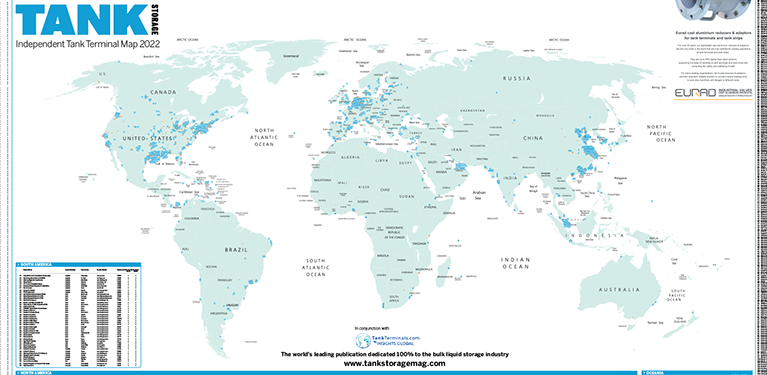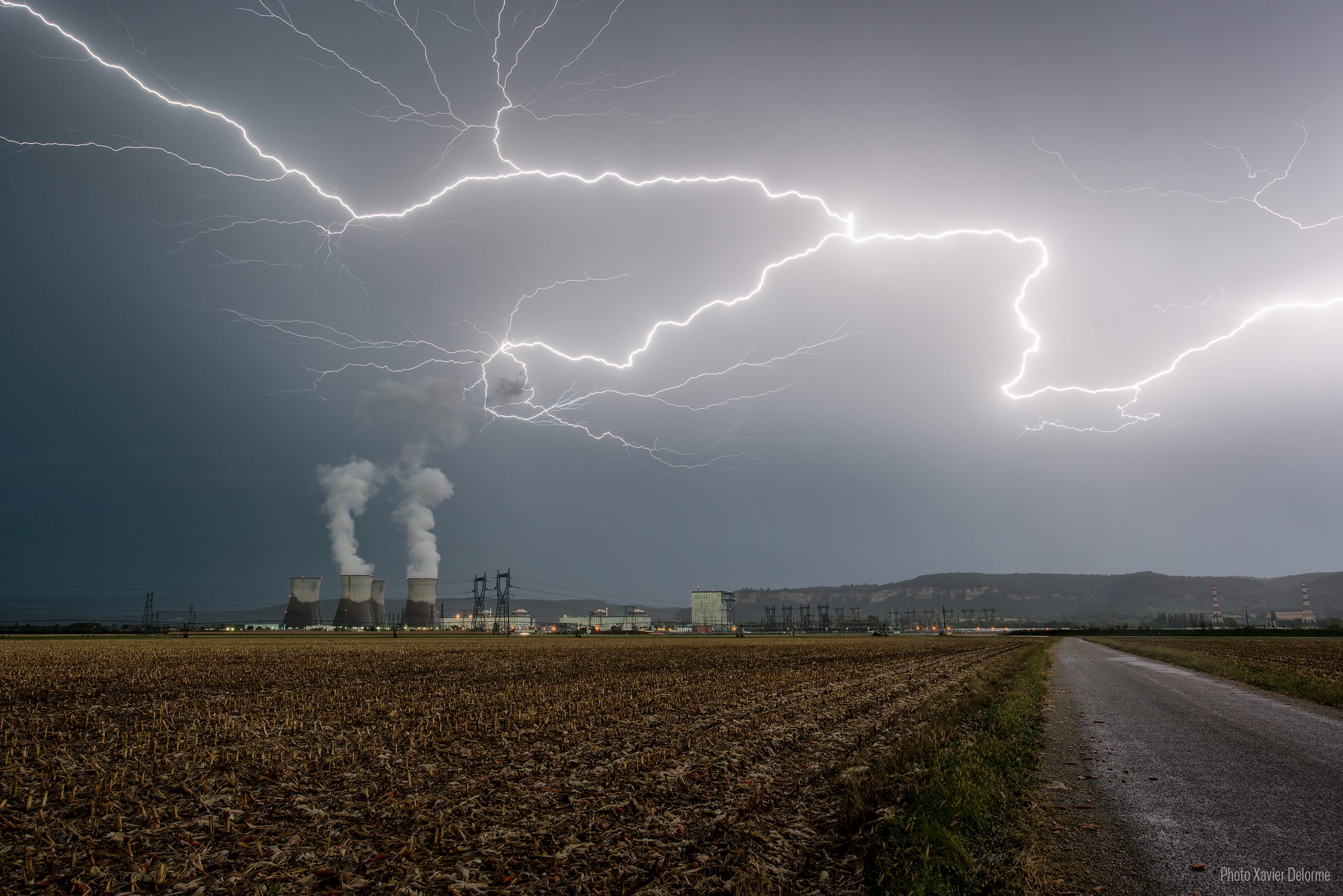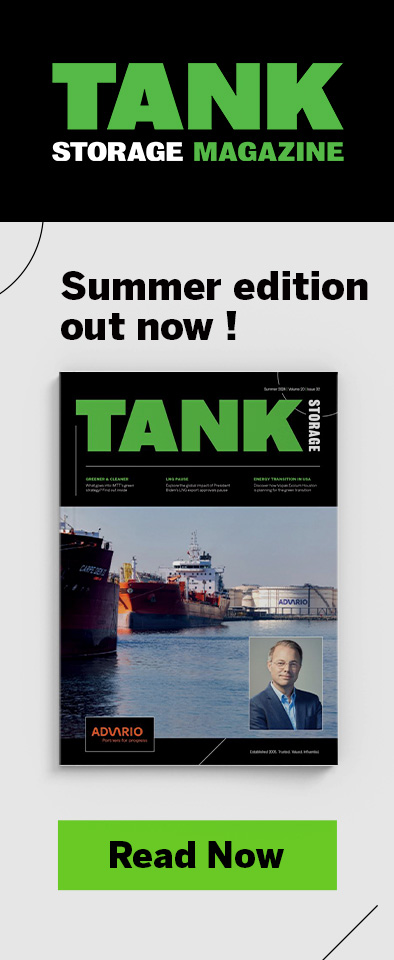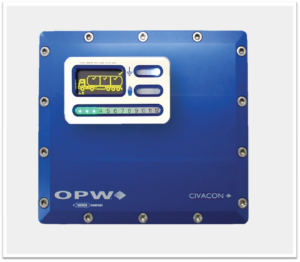As a dangerous natural phenomenon, thunderstorms are the 25th most common cause of death in the world. According to one large study1, 33% of all oil tank accidents are caused by lightning.
Although they are therefore an obvious threat, reliable solutions to minimise the risk of thunderstorms exist for professionals, enabling them to secure their teams, facilities, and operations in a timely and safe manner. Some storage operators in Europe have already equipped themselves with such solutions. Météorage helps companies to better understand the challenges of thunderstorm risk minimisation.
WHY BOTHER WITH LIGHTNING RISK MITIGATION SOLUTIONS?
Lightning risk mitigation can include stopping unloading activities, interrupting maintenance operations, taking personnel to safety, and issuing safety instructions for pipeline operations during a storm.
Some daily operations in the sector, especially those involving the handling of hydrocarbons, a highly flammable material, are exposed to a higher risk of lightning. In addition, some buildings, such as oil plants or refineries, mainly made of metal, are generally located in large areas, far from any building. This factor increases the risk of lightning and combined with the flammability of the stored liquids, can generate a considerable risk of explosion and fire.
EXISTING SOLUTIONS
Lightning prevention solutions are a real decision support tool for operators. They allow operators to determine, in time, the moment when the storm represents a real threat and give the necessary time to activate the safety protocols established for each operation.
In Europe and around the world, many different companies’ expertise in
lightning detection is based on the use of different technologies:
- Technologies from local detectors and field mills: Some detect the wave emitted by lightning and others detect electric field anomalies. At present, their range is limited, and their installation, calibration and maintenance can be expensive and complicated. Also, their effectiveness has never been scientifically proven and they don’t discriminate between cloud-to-ground lightning and intra-cloud activity.
- Satellite or radar imagery: Although satellite detection has the advantage of providing global coverage, the satellite’s motion only allows observation of a limited area for a short time, of the order of three minutes. This is sufficient to detect lightning but not suitable for the continuous observation of a storm. Detection by radar systems can also provide an accurate picture: however, these generally require implementation and maintenance. Only meteorological, military or aviation services have them. The disadvantage of these systems is that they do not provide any information on the electrical nature electrical nature of the cloud, which is a sure sign of the imminence or occurrence of a storm.
- Technologies from detection networks: This is the best proven detection technology today. Information from lightning detection networks is the only one available in real time, since lightning is detected as it happens, generally only ten seconds after it has occurred. Moreover, this method currently provides the best results in terms of anticipation, at less than one hour.
The detection and location of thunderstorms is of interest to many fields including meteorology, industries, military, and research. Many systems have been developed, with their own limitations and advantages, which meet the requirements.
In recent years, lightning location systems, organised in networks of electromagnetic sensors, have emerged as an essential solution for storm detection. These networks are becoming more and more efficient, and their data are used in all areas affected by thunderstorms.
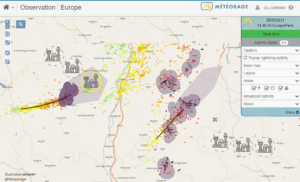
THE MÉTÉORAGE DETECTION NETWORK
Météorage is the French operator of the European lightning detection network. As shown in an official study published by the World Meteorological Organization (WMO)2, the technology used by the company is currently the most performant and efficient worldwide.
While lightning cannot be avoided, there are professional solutions to prevent its effects. Since 1987, Météorage has operated its own lightning detection network, specialising in the valuation of lightning data, its core business.
The company contributes towards raising awareness and prevention to reduce the risks associated with lightning, and supports users all over the world, in sectors where exposure to the risk of lightning represents a significant challenge at various levels: wind power, oil, transport, electricity, leisure, etc.
Météorage advises and assists its subscribers to better manage the risk of lightning on their site, providing them with innovative and reliable solutions, adapted to their needs and all levels of
risk management:
- In real-time: The observation services allow users, specially thanks to a dynamic interface allowing the integration of their business data, to visualise and follow in real-time the movement of the storms on their sites, parks, farms, or networks. Combined with the alarm service, users can be warned in the event of a risk of storms on a site and can better anticipate intervention decisions: evacuate personnel, send maintenance teams in case of suspected breakdown or disaster, stop loading activities etc. In addition to helping users guarantee the safety of staff members, these solutions also help limit production downtime and thus, economic losses.
- In the past: Solutions exist to facilitate on-site inspections, insurance claims or lightning accidents, and are particularly useful when scheduling maintenance operations after the storm has passed. With a rich database of decades of data collected throughout Western Europe, the company can provide lightning statistics on several geographical levels and on an international scale. These make it possible to assess the level of lightning in an area and to determine the risk level of a site according to its location.
Thanks to a support team dedicated to its customers, Météorage ensures a supervision of its services every day of the year, 24/7.
ANTWERP CASE STUDY
A fuel depot supplied by the Antwerp refinery via a pipeline, has a storage capacity of 756,000 m3, and operates 24/7, and receives around 500 truck drivers a day who call in to refuel, is one of the users of the Météorage detection system.
‘When storm activity is detected within a radius of 10 km, we are warned to stop our activities and get people on our site safely into buildings that offer protection against lightning. Once the episode is over, we are also informed and can resume our activity. On the internet, I can also follow the thunderstorm’s progress with precision and see how many strikes have hit the depot, to take the necessary measures, including checking our lightning protection systems,’ says the manager of the fuel depot, adding: ‘This also enables us to comply with the regulations, which require the detection of lightning and the counting of strikes. Météorage makes it easy for us by helping us make the right choices.’
The experience and the habit of Météorage, dealing with the most demanding customers, allow its
teams to propose a quality approach to evaluate the performance of a network, define indicators or applicable procedures and designate a redundant and fault-tolerant system.
References
- Chang, JI and Lin, C-C 2006, ‘A study of storage tank accidents’, Journal of Loss Prevention in the Process Industries, vol. 19, pp. 51-59
- Report on the Performance Evaluation of the VLFLF Lightning Sensors, World Meteorological Organization, 2015, https://www.meteorage.com/sites/default/files/2018-01/2015-WMO%20Report%20on%20the%20Performance%20Evaluation%20of%20the%20VLFLF%20Lightning%20Sensors.pdf
For more information :
Contact the Météorage team on commercial@meteorage.com or meet its experts on Stand A1 at StocExpo, which will be held from 23-35 May 2022 in Rotterdam, the Netherlands.


